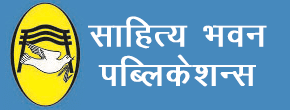प्रस्तुत संस्करण पूर्णत: बिनोबा भावे विश्वविद्यालय के बी. कॉम. प्रथम सेमेस्टर के लिए शैक्षणिक सत्र 2022-23 से प्रभावी नए पाठ्यक्रमानुसार तैयार किया गया है |
वित्तीय लेखांकन एवं कम्प्यूटरीकृत लेखांकन (Financial Accounting and Computerised Accounting) Syllabus For B.Com. Ist Semester of Vinoba Bhave University
SYLLABUS
Semester-I
Financial Accounting
Major Course MJ-01
Unit 1: (a) Theoretical Framework
- Accounting as an information system, the users of financial accounting information and their needs. Qualitative characteristics of accounting information. Functions, advantages and limitations of accounting. Branches of accounting. Bases of accounting : cash basis and accrual basis. 2. Financial accounting principles : Concepts and Conventions.
- Accounting standards: Concept, benefits and Process of formulation of Accounting Standards including Ind AS (IFRS converged standards) and IFRSs; convergence Vs. adoption; Application of accounting standards (AS and Ind AS) on various entities in India. International Financial Accounting Standards (IFRS)– meaning, need and scope; Process of issuing IFRS.
Unit 1 : (b) Accounting Process
- From recording of a business transaction to preparation of trial balance including adjustments. Application of Generally Accepted Accounting Principles in recording financial transactions and preparing financial statements.
Unit 2 : Computerized Accounting Systems
- Computerized Accounting Systems : Computerized Accounts by using any popular accounting software Creating a Company; Configure and Features settings;
- Creating Accounting Ledgers and Groups; Creating Stock Items and Groups; Vouchers Entry; 3. Generating Reports-Cash Book, Ledger Accounts, Trial Balance, Profit and Loss Account, Balance Sheet;
- Cash Flow Statement.
- Selecting and shutting a Company; Backup and Restore data of a Company. Unit 3 : Business Income, Accounting for Depreciation and Inventory Valuation System. 1. Business income: Concept of Revenue and Business Income, Measurement of business income;
relevance of accounting period, continuity doctrine and matching concept in the measurement of business income; Objectives of measurement of Business income.
- Revenue recognition: Recognition of expenses and income. Recognition of expenses and income with a reference to AS 9 and Ind AS 18.
- The nature of Depreciation. Accounting concept of depreciation. Factors in the measurement of depreciation. Methods of computing depreciation: straight line method and diminishing balance method; Disposal of depreciable assets; change in method of Depreciation and its impact of on measurement of business income.
- Inventories: Meaning. Significance of inventory valuation. Inventory Record Systems: periodic and perpetual. Methods of computing depreciation: FIFO, LIFO and Weighted Average. Application of Accounting Standard in valuation of Inventory. Impact of inventory valuation on measurement of business income.
Unit 4 : Financial statements of Sole Proprietorship, Partnership Firms and Not-for-Profit Making Concern
- Capital and revenue expenditures and receipts: general introduction only. 2 Preparation of financial statements of non-corporate business entities-Sole. Proprietorship and Partnership firms (both manual and using appropriate software).
- Preparation of financial statements of Not-for-Profit Organisations.
Unit 5 : Accounting for Branch
- Concept of Dependent branches; Branch Accounting – debtors system, stock and debtors’ system
branch final account system and wholesale basis system.
- Independent branches: concept, accounting treatment with necessary adjustment entries; Incorporation of Branch Trial Balance in Head Office Books for home branches.







![व्यावसायिक सांख्यिकी (Business Statistics) [for T.M. Bhagalpur University and Sido Kanhu University]](https://i0.wp.com/sahityabhawanpublications.com/wp-content/uploads/2017/10/2156-Business-Statistics-For-BCom-Hons-IIIrd-Year-of-Tilka-Manjhi-Bhagalpur-University-Munger-University-Hindi-Paperback-Dr-SM-Shukla-Dr-Shiv-Pujan-Sahai.jpg?resize=247%2C300&ssl=1)



![Practical Problems in Business Statistics [for Various Universities]](https://i0.wp.com/sahityabhawanpublications.com/wp-content/uploads/2017/10/2643-Practical-Problems-in-Business-Statistics.jpg?resize=245%2C300&ssl=1)


Reviews
There are no reviews yet.